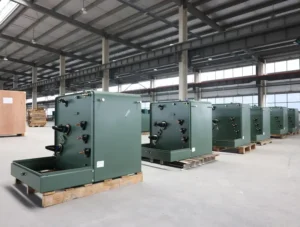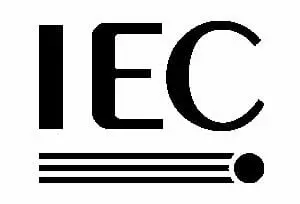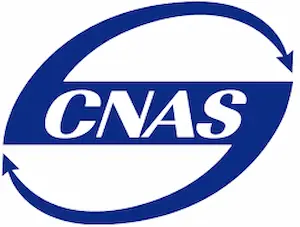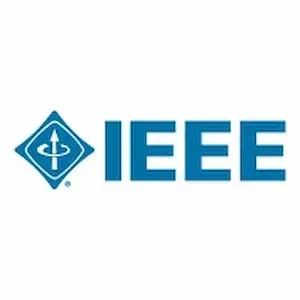Distribution Transformer Standards in Europe
In Europe, distribution transformer standards are primarily governed by the IEC (International Electrotechnical Commission) and EN (European Norm) standards. These standards focus on ensuring safety, energy efficiency, and environmental sustainability. The key standards include IEC 60076, which provides general specifications for transformers, and EN 50588-1, which aligns with European Union energy efficiency directives. These standards are vital for ensuring transformers operate reliably and efficiently across Europe’s diverse energy systems, with a strong focus on reducing energy losses and meeting eco-design requirements.
Key Takeaways
IEC and EN Standards: Distribution transformers in Europe are governed by IEC 60076 and EN 50588-1 standards, which focus on performance, safety, and energy efficiency. IEC 60076 sets general transformer specifications, while EN 50588-1 ensures compliance with the European Union’s Ecodesign Directive.
Energy Efficiency: EN 50588-1 emphasizes minimizing energy losses, particularly no-load and load losses, helping Europe meet its environmental and energy-saving goals. Compliance with this standard is mandatory for transformers sold in the EU.
Performance Testing: IEC 60076 mandates rigorous testing for transformers, including dielectric strength, temperature rise, and short-circuit resilience, ensuring long-term reliability and safe operation across various regions in Europe.
Environmental Considerations: European standards promote eco-friendly designs and sustainable materials, aligning with EU regulations to reduce carbon emissions and environmental impact.
Adaptation to Diverse Conditions: These standards ensure that transformers are suited for Europe’s varied climates and environments, from urban areas requiring low noise levels to rural and remote locations needing robust, long-lasting transformers.
Skid Mounted Transformer(Small-substastion Transformer)
Single Phase Pole Mounted Transformer
Oil Immersed Power Transformer
Table of Content
Overview of Distribution Transformer Standards in Europe
Europe’s distribution transformer standards are primarily guided by the International Electrotechnical Commission (IEC) standards, which are internationally recognized, and the European Norm (EN) standards, which are tailored to meet the specific regulatory and environmental requirements of the European Union. These standards ensure that transformers are designed, tested, and operated with an emphasis on energy efficiency, environmental sustainability, and reliability across various regions.

IEC 60076 – Power Transformers
The IEC 60076 standard is the primary international standard for transformers, and it forms the basis for transformer design and testing in Europe. It provides comprehensive guidelines for transformer performance, safety, and testing, ensuring that transformers meet the necessary operational requirements for distribution systems.
Get it now: What is a pad-mounted transformer?
Key Provisions of IEC 60076
- Scope: This standard applies to power transformers, including distribution transformers, and covers liquid-immersed as well as dry-type transformers. It outlines requirements for transformer ratings, insulation, temperature limits, and short-circuit performance.
- Insulation Requirements: Transformers must use insulating materials that can withstand the operational voltages and environmental conditions they are exposed to. The insulation system should be robust enough to handle both normal operating voltages and transient overvoltages caused by switching events or lightning strikes.
- Temperature Rise: The standard specifies maximum allowable temperature rises in transformer components to prevent overheating. This ensures that transformers can operate reliably in various ambient temperatures without the risk of failure due to excessive heat.
- Short-Circuit Strength: IEC 60076 sets guidelines for a transformer’s ability to withstand short-circuit conditions, ensuring that they can handle mechanical and electrical stresses during faults without sustaining major damage.
- Testing Procedures: The standard mandates rigorous testing protocols, including dielectric tests, short-circuit tests, and temperature rise tests, to ensure transformers meet performance and safety requirements before they are put into service.
IEC 60076 ensures that distribution transformers across Europe are built to high standards, ensuring reliability and long-term performance in a wide range of applications.
EN 50588-1 – Eco-Design and Energy Efficiency of Distribution Transformers
EN 50588-1 is a European standard that focuses on the eco-design and energy efficiency of distribution transformers. It aligns with the European Union’s Ecodesign Directive, which aims to reduce the environmental impact of energy-related products by improving their energy efficiency and minimizing their life-cycle energy consumption.
Key Provisions of EN 50588-1
- Scope: This standard applies to oil-immersed and dry-type distribution transformers used in medium- and low-voltage power distribution networks. It sets minimum efficiency levels that transformers must meet, focusing on reducing both no-load losses (losses occurring when the transformer is energized but not supplying load) and load losses (losses when the transformer is supplying power to a load).
- Efficiency Classes: EN 50588-1 categorizes transformers into different efficiency classes based on their capacity and energy performance. These classes determine the acceptable levels of no-load and load losses, ensuring that transformers are optimized for energy efficiency.
- Environmental Impact: The standard promotes eco-friendly designs by encouraging the use of sustainable materials and limiting energy losses. By setting stringent requirements for energy efficiency, it helps reduce the overall carbon footprint of Europe’s power distribution systems.
- Compliance with Ecodesign Directive: EN 50588-1 ensures that distribution transformers sold in the European Union comply with the Ecodesign Directive (2009/125/EC), which mandates that energy-related products, including transformers, must meet strict environmental and energy efficiency requirements.
This standard plays a critical role in Europe’s commitment to reducing greenhouse gas emissions and promoting sustainable energy use by ensuring that distribution transformers operate efficiently and with minimal energy loss.
Practical Implementation of IEC and EN Standards in Europe
In practice, the combination of IEC 60076 and EN 50588-1 ensures that distribution transformers in Europe meet high-performance standards while contributing to energy savings and environmental sustainability. Compliance with these standards is essential for manufacturers and utilities operating within the European Union and other regions that follow European regulations.
Get it now: Distribution Transformer Standards in Canada
Design Compliance
Manufacturers of distribution transformers must design products that comply with both the performance standards outlined in IEC 60076 and the energy efficiency requirements of EN 50588-1. This involves selecting materials and components that reduce energy losses and ensure long-term reliability. Transformers must also be designed to meet the specific requirements of Europe’s varying climates, from the cold winters of Northern Europe to the warmer climates of Southern Europe.
Testing and Certification
Before transformers can be installed in European power grids, they must undergo thorough testing as specified by IEC 60076. This testing ensures that the transformers meet operational and safety standards, including insulation strength, short-circuit resilience, and temperature rise limits. Additionally, manufacturers must certify that their transformers meet the energy efficiency levels set by EN 50588-1, ensuring compliance with the Ecodesign Directive.
Efficiency and Environmental Compliance
The energy efficiency requirements in EN 50588-1 help reduce energy losses in Europe’s power grids, contributing to the European Union’s goals of reducing carbon emissions and promoting sustainable energy practices. By minimizing no-load and load losses, these standards ensure that transformers operate with high efficiency, reducing overall electricity consumption and operational costs.
Get it now: What is a Skid Mounted Transformer?
Regional and Environmental Considerations in Europe
Europe has diverse environmental and regulatory needs, and distribution transformers must be capable of operating reliably under a wide range of conditions. This includes dealing with the specific demands of urban, rural, and industrial power distribution systems.
Urban and Rural Applications
In densely populated urban areas, transformers must be designed for compact installations and low noise levels. The IEC 60076 standard ensures that transformers meet these operational requirements, while EN 50588-1 mandates that they operate with high energy efficiency to minimize their impact on urban power grids.
Rural and Remote Applications
In rural or remote areas, distribution transformers must be designed for long-term reliability, as maintenance can be difficult in these locations. The standards ensure that transformers used in these regions are robust, with high resistance to mechanical stress, environmental factors, and electrical surges.
Get it now: How does a Distribution Transformer Work?
Key Benefits of IEC and EN Standards for Distribution Transformers in Europe
The adoption of IEC 60076 and EN 50588-1 standards brings numerous benefits to the distribution transformer industry in Europe, particularly in terms of performance, energy savings, and environmental sustainability.
Energy Savings and Efficiency
The focus on energy efficiency in EN 50588-1 helps reduce energy losses in Europe’s power distribution systems. By mandating minimum efficiency levels, the standard ensures that transformers contribute to overall energy savings, helping to lower electricity consumption and reduce the carbon footprint of the energy sector.
Environmental Sustainability
The eco-design requirements of EN 50588-1, in alignment with the Ecodesign Directive, ensure that transformers are manufactured with a focus on sustainability. This includes promoting the use of environmentally friendly materials, minimizing energy losses, and reducing the environmental impact of transformers over their operational lifetime.
Reliability and Safety
The performance standards set by IEC 60076 ensure that distribution transformers in Europe operate reliably and safely, even under the most demanding conditions. Whether in urban centers or rural areas, transformers built to these standards are designed to withstand electrical faults, temperature fluctuations, and mechanical stress.











